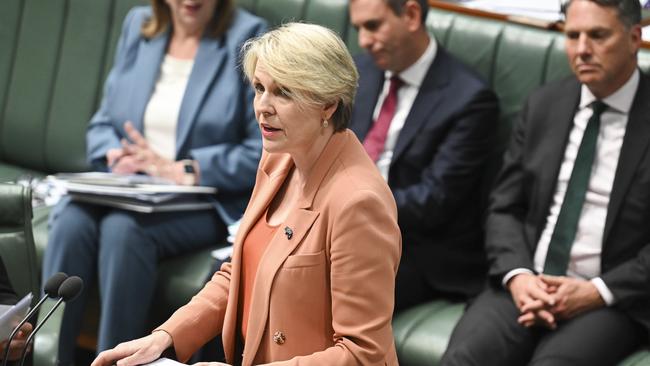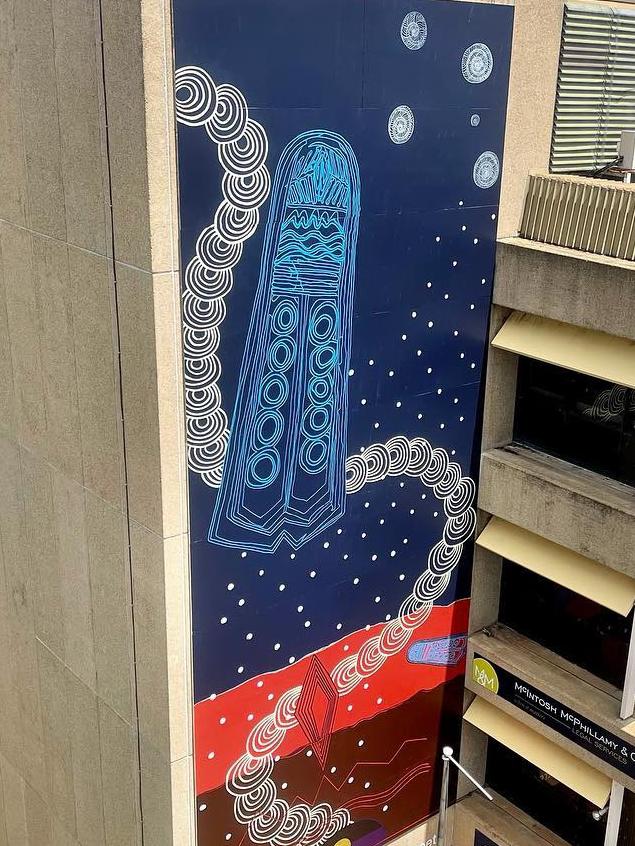Cultural claims on Blayney goldmine site simply not backed by evidence

In mid-August, Environment Minister Tanya Plibersek made a section 10 declaration to block the proposed development of a tailings dam for the $1bn McPhillamys goldmine project, on the basis that it was a significant Indigenous area requiring cultural protection and preservation.
This came as a shock to many, including me, since the development had all the necessary approvals from state agencies and was not resisted by the Orange Local Aboriginal Land Council. Since the declaration, the blocking of the project has been hotly debated in public, with key evidence emerging from several sources, including the paintings of spirits by Nyree Reynolds and public artwork featuring the blue-banded bee by Birrunga Wiradyuri.
I am taking this opportunity to explain my views arising from the cultural values mapping I did for the project, which investigated the likelihood of there being any significant Aboriginal heritage within the Belubula River area. My report, completed in November 2021, is at odds with Plibersek’s section 10 declaration, since it was my main finding that the project posed no threat of injury or desecration to significant Aboriginal heritage.

The area formerly occupied by the Wiradjuri peoples is large and, while at the time of first European settlement all members spoke related dialects and shared many cultural attributes, they were internally diverse. They were comprised of distinct subgroups that were sometimes at enmity with each other and would never have acted together as a single entity, which some contemporary Aboriginal accounts have suggested.
The last of the main ceremonial cycles, or Bora ceremonies, would have been held in the region during the late 19th century. In the absence of a ceremonial life, the persistence of the land-based mythology in its entirety as a living body of knowledge until the present is unlikely.
Today, the Belubula River exists within a rural area dominated by exotic willows and thistles, which is far away from places, such as town camps and mission reserves, where Wiradjuri descendants have lived since European settlement. This means there is a vacuum of contemporary community knowledge and experience with the Belubula River.
Today, people who wish to connect with a modern landscape via their Indigenous ancestry often choose art as a means of exploring the past, as Reynolds has done. The perceptions of country produced in this manner are, understandably, heavily laden with emotion and personal meaning, but they often stand in stark contrast to anthropological interpretations of existing cultural records. When validating the existence and significance of sites, an anthropologist will routinely ask how the associated information was passed down through the community – and by whom?

Other pertinent issues concern who has the cultural right to speak for that country and whether assertions of importance being made are supported by others within the relevant community? Information is never produced in a vacuum, as those professionals who have worked in the native title arena will know very well.
As described in the anthropological literature, Wiradjuri totems were associated with landowning clans and were invariably economically important species, like the mallee hen, emu, possum, red kangaroo, black duck and others. Recently, public claims have been made that the blue-banded bee was a creation ancestor with a story relevant to headwaters of the Belubula River. This is not supported by the record and, in my opinion, it is highly unlikely since blue-banded bees (Amegilla) are solitary and widespread across mainland Australia.
They are species that do not produce collectable honey, so they have no recorded Aboriginal economic use, which, in my view, makes them an unlikely candidate as a major totem. As I found during my trip to the proposed mine area, the “springs” that have recently been associated with the blue-banded bee by proponents are actually places within paddocks where water seeps out after heavy rain, and as such I am reliably informed that they occur across the entire region.
The origin of the blue-banded bees as a myth narrative is more likely than not to be recent, as the earliest accounts of the story appear in the media from early 2022. If this story were so culturally important, it would logically have been mentioned much earlier, during earlier consultations between Regis Resources and local Aboriginal representatives. In a community environment, crucial cultural knowledge is shared in order to protect it.

The meaning behind many of the place names in current use across central western New South Wales are poorly recorded, although it is likely the Belubula River as a topographical feature has an Aboriginal-derived name. The records are inconsistent with its meaning: some relate to its curvy bends, while others suggest a “stony river”. The originally intended meaning will never be known for certain, and in this context all the recently purported derivations of Belubula are equally as speculative. Contemporary Aboriginal assertions that every watercourse in Wiradjuri country is a sacred site are inconsistent with heritage practices across the rest of Australia.
The ethnographic and historical records relating to the Wiradjuri peoples are extensive, and, while it is not possible to say they are complete, it can nonetheless be reasonably expected that any cultural heritage of significance to the whole region, such as has been asserted for the Belubula River, would have been mentioned if it had existed.
Philip A. Clarke is an anthropologist and historian. For three decades he worked at the South Australia Museum. He works as a consultant on native title and heritage.






